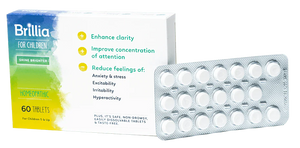The task of feeding a family, day in and day out, can be like navigating an obstacle course: picky eaters, hectic work and school schedules, varying taste preferences, finding time to gather and prepare food. Add incorporating healthy food choices into the already complicated feeding process can leave many parents feeling like throwing in the tea towel. Parents, grab a spatula because there’s good news: eating healthy is a habit. And habits can be established, changed, shifted, and tweaked with just a little know-how.
Know Your Role in Healthy Eating
Family feeding expert and registered dietitian Ellyn Satter is well known for her feeding and eating philosophy: division of responsibility in feeding. Satter delineates the roles parents play in feeding as separate from the roles of the family’s children. Parents, Satter says, are responsible for what food is served, when it is served and where it is served. Children are responsible for choosing whether to eat and how much is eaten. As the party responsible for providing what food is served, parents set the example of how to eat healthy in their households.
Stock a Healthy Kitchen
Taking a cue from Satter’s feeding philosophy, parents can establish and reinforce healthy eating patterns for their children by stocking the kitchen with healthy choices. When the kitchen is full of healthy foods, healthy eating becomes the easier choice. Struggling to identify what a healthy food choice is? The MyPlate website, developed by the United States Department of Agriculture and based on the Dietary Guidelines for Americans 2015-2020, encourages parents to increase offerings of whole grains, fruits, vegetables, and quality protein while limiting offerings of foods that are high in sugar, sodium, and saturated fat.
Fill Half Your Plate with Fruits and Vegetables
The MyPlate website mentioned above offers many doable strategies for healthy feeding and eating. One strategy, in particular, make half your plate fruits and vegetables, is not only simple to remember but simple to follow. When half your plate is full of nutrient-dense fruits and vegetables, less room is available to include foods high in sugar, salt, and saturated fat. The Fruits & Veggies More Matters website is overflowing with ideas, recipes, and how-tos to assist parents on filling that fruits and veggies side of the plate.
Eat with Your Kids
Our modern-day lifestyles keep families on the go with commutes and after-school activities. Making time to eat together can be a challenge when families members are scattered. However, research shows that when parents make time to share meals with their children, the children benefit healthwise. One meta-analysis found that children were more likely to eat healthier overall and be within normal weight ranges when they shared meals with their families three or more times per week.
Start Small
Starting any new habit can be uncomfortable and awkward at first. It’s uncharted territory for parents and for children. But, as philosopher Lao Tzu said: “the journey of 1,000 miles begins with a single step.” For parents wanting to start implementing healthier feeding and eating patterns in their households, selecting only one or two eating patterns at a time to tweak will allow family members to acclimate to, and even embrace, the new habit. Remember parents, any progress is still progress. Celebrate the smallest successes!






